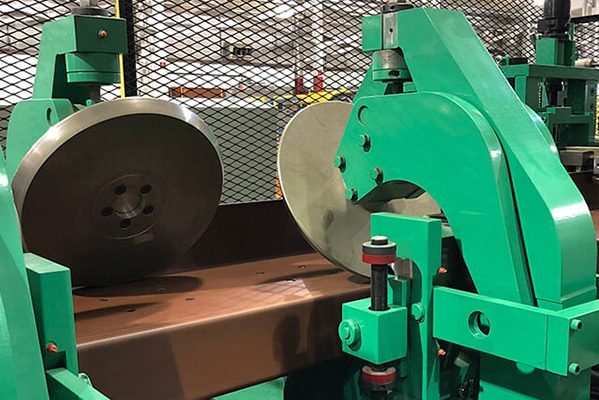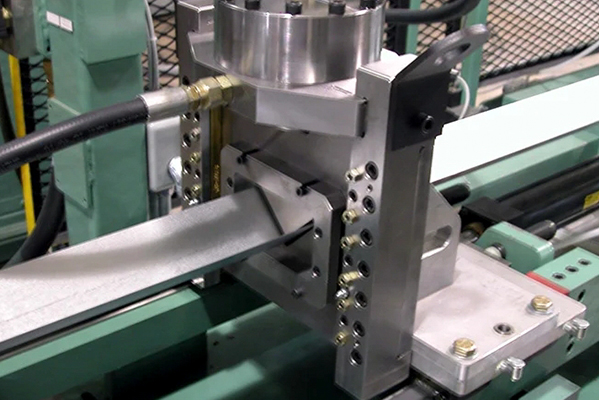Navigation Menu
Contact Us
- Email:
- info@wxavatar.com
- Address:
- Yurong Village, Yuqi Street, Huishan District, Wuxi, China.
Release Date:Apr 27, 2025 Visit:53 Source:Roll Forming Machine Factory
The rolling process is a key method in the manufacturing of metal products, utilized to shape or reduce the thickness of metal through the application of pressure. In this process, the metal is passed through a pair of rotating rolls, which compress the material to achieve the desired thickness, shape, or finish. Rolling can be used for a variety of metals, including steel, aluminum, and copper, and plays a vital role in industries ranging from construction to automotive manufacturing.
Types of Rolling Processes
Rolling is generally classified into two main categories: hot rolling and cold rolling. Both have distinct characteristics and are chosen depending on the desired properties of the metal and the specifications of the end product.

1.Hot Rolling: This process involves heating the metal to a high temperature before it is passed through the rolls. By heating the material above its recrystallization point, hot rolling allows the metal to be easily shaped and deformed. Hot rolling is often used to produce large sections such as beams, plates, and slabs. One of the key advantages of hot rolling is its ability to work with larger amounts of material and produce items with fewer mechanical properties at a lower cost.
2.Cold Rolling: Cold rolling is conducted at room temperature or below the recrystallization temperature of the material. The primary benefit of cold rolling is that it produces a finer surface finish and a stronger material due to the strain hardening that occurs during deformation. Cold rolling is commonly used to produce thin sheets, foils, and precise shapes, where a smooth surface and increased strength are necessary.
The Rolling Process Workflow
1.Preparation: Before the rolling process begins, the metal is typically cleaned to remove impurities such as scale or dirt. This ensures that the rolling process will produce a uniform and high-quality product.
2.Feeding the Metal: The metal is then fed into the rolling mill, where it is placed between two rotating rolls. The rolls can be adjusted to control the thickness of the material by adjusting the gap between them.
3.Compression and Deformation: As the metal passes between the rolls, it is subjected to compressive forces, which cause it to deform. This reduction in thickness is accompanied by elongation in the material’s length, allowing the metal to take the desired shape.
4.Exit and Cooling: After passing through the rolls, the metal is either cooled in a controlled manner or, in the case of hot rolling, cooled naturally. The material can then be further processed if necessary, such as through additional rolling or cutting to the desired length.
5.Post-Processing: Following the rolling process, the metal may undergo additional treatments such as annealing, pickling, or surface finishing, depending on the material and intended application.
Key Advantages of Rolling
High Efficiency: Rolling is highly efficient for large-scale production, as it allows for continuous shaping of materials without significant downtime. This makes it ideal for mass production of items such as plates, bars, and strips.
Material Strength: Cold rolling increases the material’s yield strength due to the strain hardening effect, while hot rolling is effective for producing large sections with enhanced toughness.
Versatility: The rolling process can be adapted to produce various shapes and sizes, making it a versatile method in industries such as automotive, construction, and consumer goods manufacturing.
Surface Finish: Cold rolling produces a smoother, more refined surface finish compared to hot rolling, which can be crucial for applications where aesthetics or precise surface quality are important.
Common Applications of Rolling
Rolling is widely used across various industries due to its ability to produce different forms of metal with specific characteristics. Some common applications include:
Construction: Rolled products such as steel beams, columns, and plates are essential for building infrastructure like bridges and buildings.
Automotive: Many car components, including body panels, structural elements, and chassis parts, are made using rolled steel or aluminum due to the strength and formability it provides.
Manufacturing: Rolled materials are frequently used in the production of machinery, tools, and equipment, where consistent thickness and strength are important.
Consumer Goods: Rolled metals such as aluminum are used in products ranging from kitchen utensils to packaging materials.

Conclusion
The rolling process is a fundamental technique in metal forming that plays a significant role in the production of a wide range of products. Whether producing large structural materials or precise automotive components, rolling offers a highly effective method for shaping metal with consistent properties. Understanding the different types of rolling processes and their specific applications helps manufacturers choose the appropriate method for their needs, ensuring efficient and high-quality production.